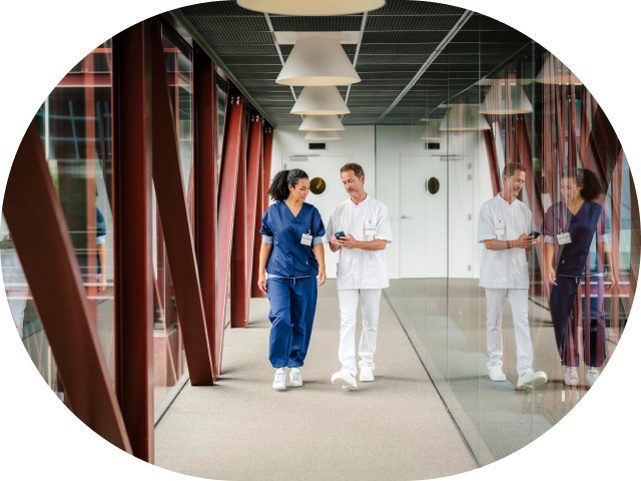Contact the following healthcare facilities directly:
MS Center Melsbroek
AZ Turnhout
Sint-Trudo Sint-Truiden
AZ Glorieux Ronse
AZ Jan Portaels Vilvoorde
Rehabilitation Hospital Inkendaal
door Nexuzhealth op 15.11.2023

The smart glasses fit perfectly into the picture of the operating room 2.0. It lets colleagues or students watch through the surgeon's eyes. From the room just down the corridor or on the other side of the world. The perfect tool for the surgeon to be assisted by a colleague during surgery or to transfer knowledge to healthcare specialists who are under training. Whether at different locations or otherwise. Moreover, the surgeon can also explain verbally what is happening, because the smart glasses stream audio in addition to video. He/she controls the camera using speech technology, keeping his/her hands completely free for the patient. This also immediately guarantees a sterile working environment.
Expertise at home
That camera is a feat of cutting-edge technology. The powerful optical zoom brings every detail into focus. The image and video function allow the user to record situations for later analysis. The most relevant images can be automatically added to the patient's medical record with one simple voice command. Conversely, the care provider can also access the record at any time. "Scan patient" and all medical data appears in an instant.
It is precisely this range of possibilities that gives the smart glasses sector-wide potential. Take the example of home nursing. For certain complex treatments, the care provider can now be assisted by a doctor or expert who is at a different location. For example, when caring for complicated wounds, piercing a port catheter or inserting a suprapubic probe. It gives both experienced as well as new care providers extra support.
By connecting to the back office, he/she calls a specialist on the spot who, from behind his desk, follows every action live and issues instructions where necessary. Orally, or by projection into the lens. Indicating or circling an image element is also an option. Once the treatment is complete, the home care assistant saves all essential data in the medical record. In this manner, the GP, pharmacist or doctor treating you in hospital will soon also have the most recent information, possibly supplemented with images and videos. An additional advantage: having the specialist look through the eyes of the home care nurse reduces the number of trips to the hospital. Especially for follow-up appointments following a more major procedure. Thus, the patient is spared sometimes painful and uncomfortable car journeys and 'enjoys' maximum expertise at home. This means time savings for both the treating doctor and the patient.
Lightweight that makes a weighty difference
In short: smartglasses provide an efficiency boost within every discipline of healthcare. They no longer leave anything to chance. So feel free to call them the sixth 'sense-organ' of the healthcare professional. Because of the extra pair of specialist eyes watching over the quality of treatment at all times, but also because of the maximum and permanent insight into the patient's medical background. Benefits that more than justify the investment of around 2,000 euros per pair of smart glasses.
Thanks to AZ Groeninge Kortrijk, for their input and cooperation from the professional’s sphere.
MS Center Melsbroek
AZ Turnhout
Sint-Trudo Sint-Truiden
AZ Glorieux Ronse
AZ Jan Portaels Vilvoorde
Rehabilitation Hospital Inkendaal